![The Mohican Board! [Bumppo's Redux!] The Mohican Board! [Bumppo's Redux!]](images/wwwboard.gif) |
|
| Author |
 Topic Topic  |
|
|
James N.
Colonial Militia
   

USA

Bumppo's Patron since [at least]:
October 24 2007
Status: offline
|
 Posted - August 04 2012 : 3:06:18 PM Posted - August 04 2012 : 3:06:18 PM



|
Image Insert:

63.91KB
New London, Conn. seen across the Thames River from Fort Griswold; note the mid-Nineteenth-Century gun emplacements near the water's edge. The small brick structure with a chimney is a hot-shot furnace, a sort of bake-oven for cannonballs, where they were heated red-hot and then used to set wooden ships afire; the stone one is likely a powder magazine.
Sir Henry Clinton was usually a resourceful and self-confident subordinate, even to the point of becoming a nuisance in advancing his views, but once he became overall British commander he grew cautious and obsessed with the responsibility of his position. By September, 1781, he was virtually "holed up" in his main base, New York City and its harbor, fearing attack by the combined forces of Washington and Rochambeau though he outnumbered them. Once Clinton realized they'd actually given him the slip, sidling around through New Jersey on their way ultimately to Virginia and Yorktown he needed some action that would hopefully draw them back. In doing this, he also answered another problem: what to do with his own troublesome subordinate, Benedict Arnold, and the numerous Tories under Clinton's command who were clamoring for action against the rebels. Arnold had not even been a British officer quite a year; he had defected to Clinton the previous September with the promise of a general's rank and, as important to the rapacious Arnold, pay. The problem was what to do with him: Clinton despised him and blamed him ( rightly ) for the death of his favorite subordinate, Major John Andre; officers on the regular British establishment resented him as an opportunistic turncoat seeking to supplant them; and Tories hated him as one who had done so much to foil their previous plans. Still, circumstances required he be utilized, praised, and rewarded in hopes it would encourage other American officers to follow his example and defect to the Crown. Previously he had been sent to Virginia where his campaign of terror had caused Washington to dispatch LaFayette, von Steuben, and a few Continentals to deal with him.
Image Insert:
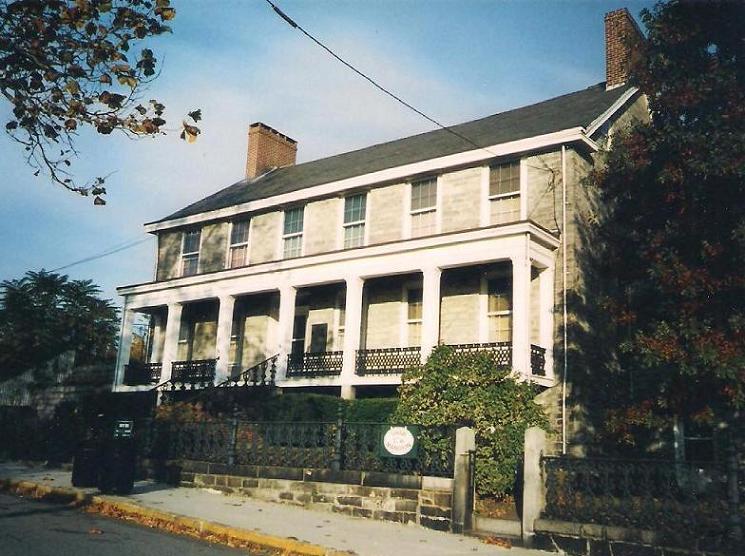
84.88KB
Replaced in Virginia by Cornwallis, Arnold returned to New York and began to agitate for another command. Since he was only considered a provincial or colonial brigadier with a status similar to that of Washington in the French and Indian War, Arnold was seldom allowed command over regular British troops, whose officers resisted serving under him. Clinton put the various Tory units in his garrison together with some British and Hessian troops under Arnold's command and sent him to neighboring Connecticut to raid another notorious privateer stronghold, New London, which had ironically once been Arnold's childhood home.
Some three miles up the Thames River and just west of the Mystic, New London was a major port and storehouse for the Continental Navy. In the picture at the top, it lies on the river's far bank and is here seen from Fort Griswold on the heights of what is now Groton, Conn. Unfortunately, the defenders were caught off-guard and only Fort Griswold was occupied; Arnold burned at least 150 New London buildings, almost half of them private residences, creating many homeless civillians. Somehow the 1756 Shaw Mansion pictured above survived, possibly due to its stone construction. Next, he turned his attention to the fort and its defenders. This is the view from the lower battery showing how it looked to the attacking Tories.
Image Insert:

34.98KB
|
|
report to moderator
|
|
|
James N.
Colonial Militia
   

USA

Bumppo's Patron since [at least]:
October 24 2007
Status: offline
|
 Posted - August 04 2012 : 4:10:07 PM Posted - August 04 2012 : 4:10:07 PM




|
The day of the raid, Sept. 6, 1781, the tiny garrison of Fort Trumbull on the New London side of the river spiked their guns and crossed to Fort Griswold, bringing its defenders to about 160 militiamen under Lt. Col. William Ledyard. While part of his command put New London to the torch, Arnold sent two British battalions, one of New Jersey Tories, and some German light infantry and British artillery, about 800 men in total, all led by Lt. Col. Edmund Eyre, in a head-on assault against the fort. This is the reconstructed fort as seen from its covered way leading from the lower battery.
Image Insert:
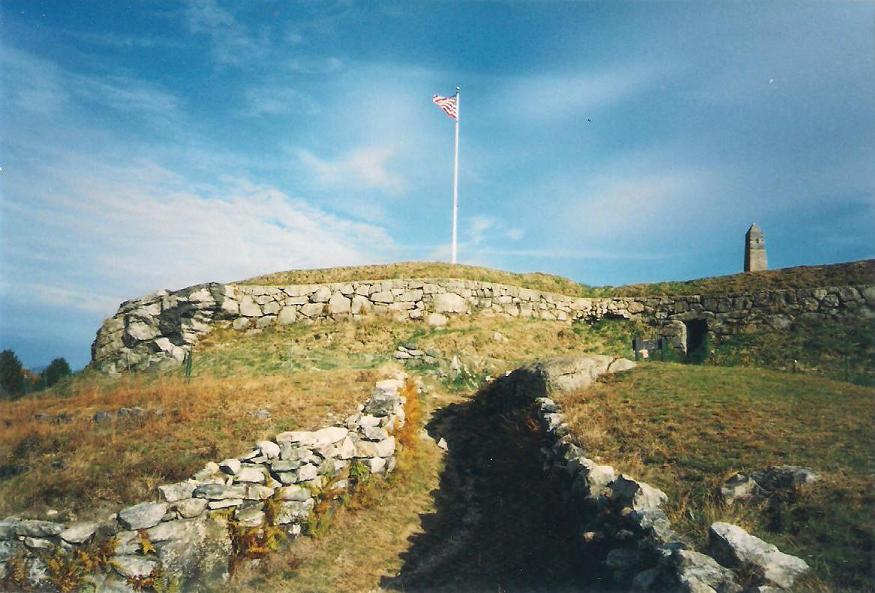
87.1KB
Lt. Col. Eyre and his next-in-command, Maj. Montgomery, were both killed in the assault; by the time their men reached the interior of the fort, their blood was up and they were looking for vengance. The outnumbered American militia sought to escape, crowding into the tiny sally-port, the small opening visible in the rear wall just below the large 1830 commemorative obelisk outside the fort. Unfortunately, few could escape the crush and most tried to surrender.
Image Insert:
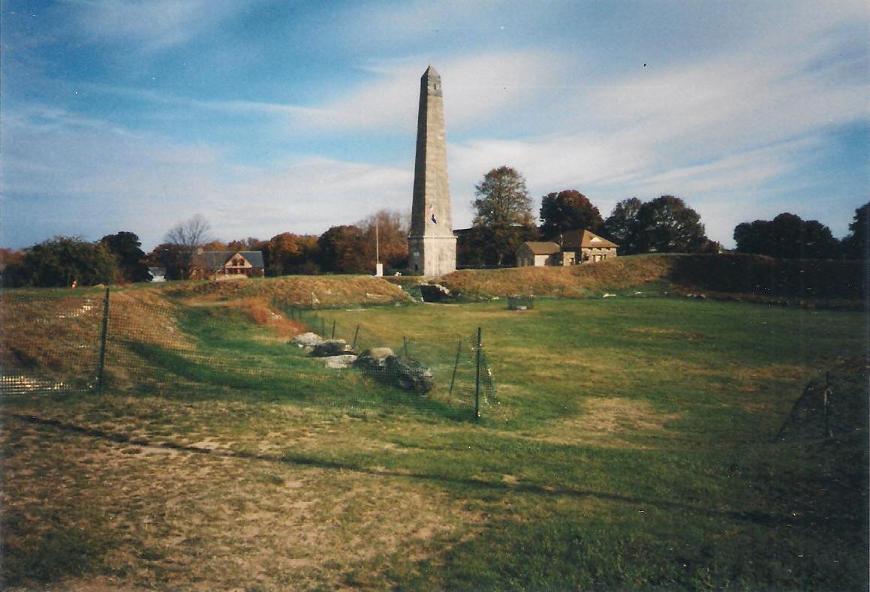
73.84KB
This small fenced monument is a memorial to Lt. Col. Ledyard, who was supposedly murdered with his own sword by the Tory officer to whom he had surrendered. Many of the American prisoners and wounded were likewise massacred by the Tories and perhaps others. Arnold reported 85 Americans killed and another 60 wounded, most of them mortally, to his own losses of about 50 killed and 150 wounded. American figures for their losses were only slightly lower, indicating the ferocity of this little-known battle.
Image Insert:
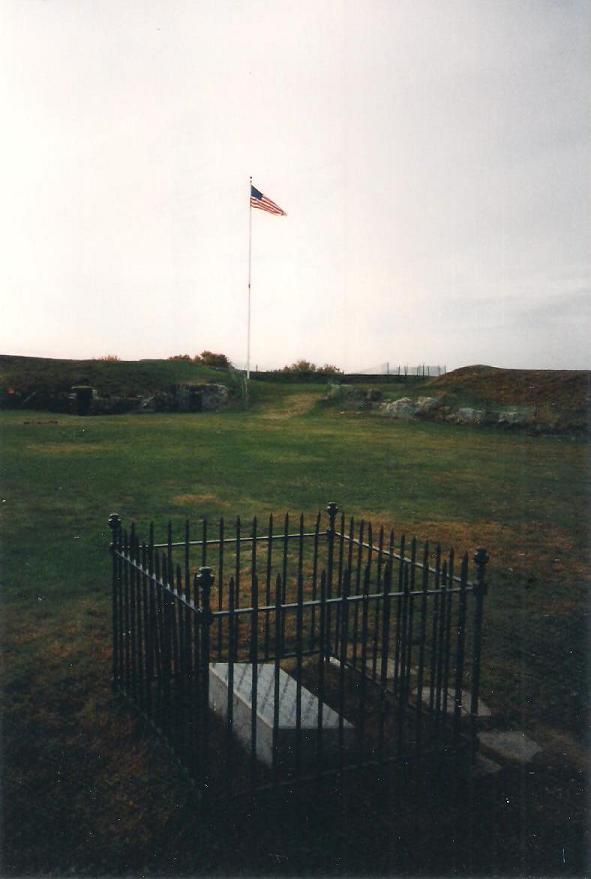
47.15KB
Image Insert:
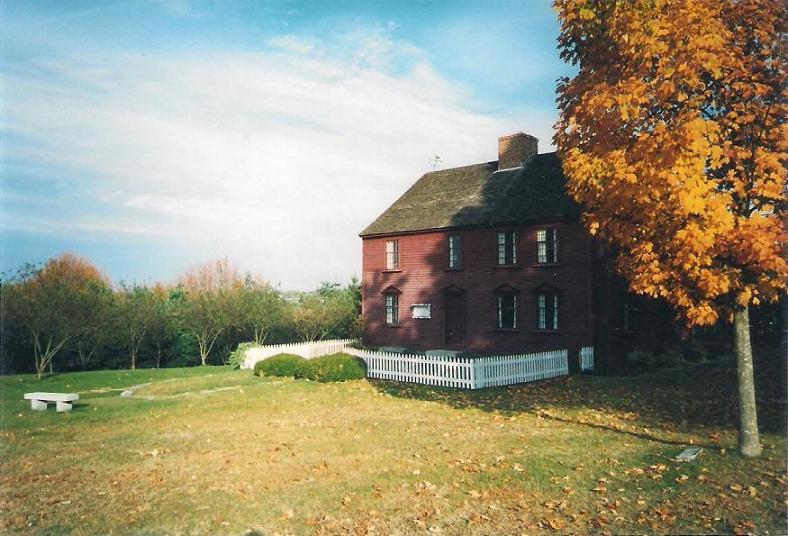
82.58KB
The so-called Monument House stands on a terrace just below the fort.
|
report to moderator  |
|
|
James N.
Colonial Militia
   

USA

Bumppo's Patron since [at least]:
October 24 2007
Status: offline
|
 Posted - August 04 2012 : 8:12:52 PM Posted - August 04 2012 : 8:12:52 PM




|
American wounded were also treated with deliberate callousness and outright cruelty, one reason so many wounds proved mortal. After Arnold left, returning to New York, bodies of the dead were interred in this small nearby cemetery where tradition says Arnold had watched the assault from the "rock outcropping" visible in the background.
Image Insert:
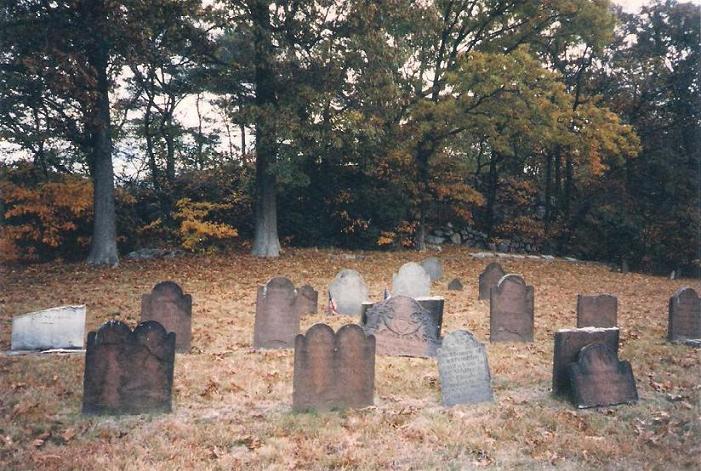
88.28 KB
Image Insert:
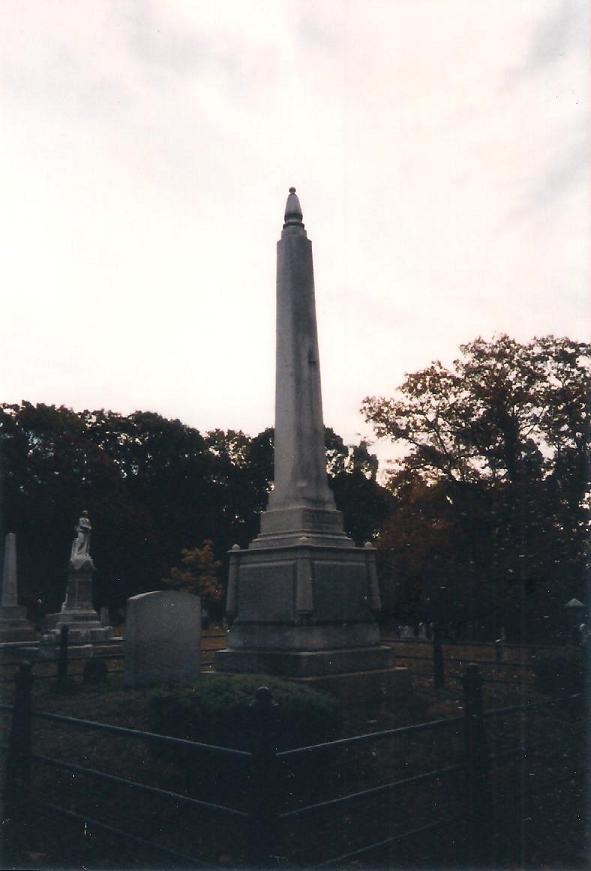
47.66 KB
Lt. Col. Ledyard rests beneath this monument erected to the memory of him and his militiamen; his original slate headstone is preserved in a glass-fronted frame at its base.
Image Insert:
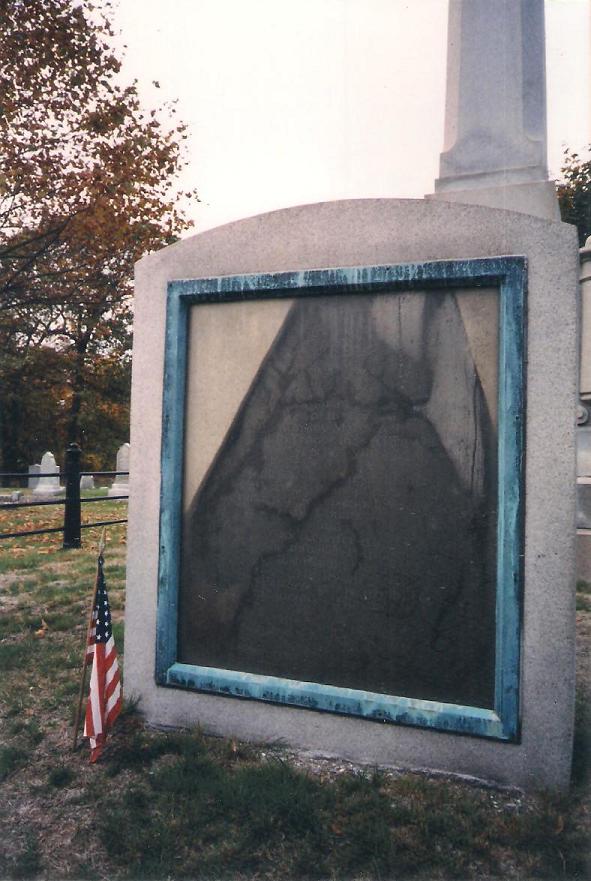
84.99 KB
Historian Mark M. Boatner had this to say about the raid and subsequent battle at Fort Griswold:
"Arnold's raid on New London achieved no military purpose except to blacken his name further. It was the last British action in the North except for those in the far-off Mohawk Valley of New York some six weeks later...Having had little opportunity to distinguish himself as a British commander, Arnold went to London in Dec., 1781. Here he was consulted on American affairs by the king and his ministers, but was offered no field command and felt himself the victim of scorn and neglect."
The raid did nothing to discourage the campaign under way against Cornwallis in Virginia, after which disaster Sir Henry was recalled to England, replaced in May, 1782 by Sir Guy Carleton. Though Washington returned to watch the British in New york, there were no more active operations after Yorktown. |
report to moderator  |
|
| |
 Topic Topic  |
|
|
|
| The Mohican Board! [Bumppo's Redux!] |
© 1997-2024 - Mohican Press |
 |
|
| Current Mohicanland page raised in 0.28 seconds |
 |
|

![The Mohican Board! [Bumppo's Redux!] The Mohican Board! [Bumppo's Redux!]](images/wwwboard.gif)


